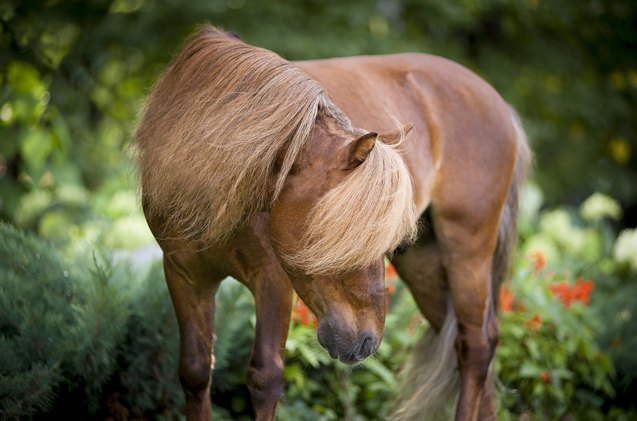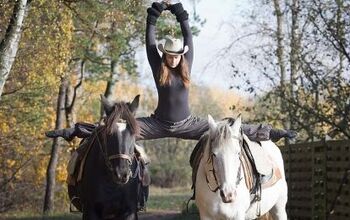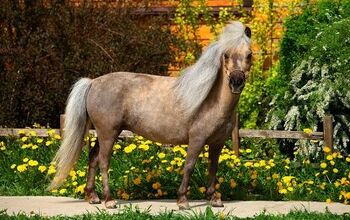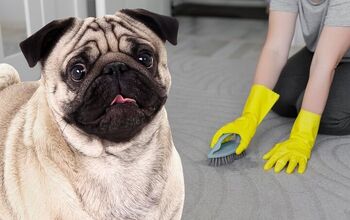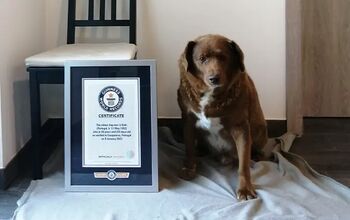Miniature Horse


About Miniature Horse
The Miniature Horse was developed in Europe in the 17th century. This was a period of time when unusual and odd animals became talking points, particularly amongst the nobility. Miniature horses that were not as refined were referred to as “pit ponies,” and they were put to work inside mines, where they also lived. And, with the arrival of the 1930s came the arrival of Miniature horses in America, where they also worked in coal mines.
The foundation breed of the Miniature Horse is the Shetland Pony, however other equine breeds were later included as the years passed. These included the Hackney pony, which was added in order to further refine the Miniature breed and its movement, as well as other horse breeds featuring pinto marking in order to alter the Miniature’s colors.
Miniature Horses were also called “pit ponies,” and they were put to work inside mines.
Ultimately, it was the selective breeding that created today’s Miniature Horse. These horses are smaller versions of their full size counterparts. Draft Horses, Arabians, Paints, and Quarter Horses, for example, can all be found in a miniature form.
In 1978, the American Miniature Horse Association was created to keep track of the majority of Miniature horses in the world.
The Miniature horse is known for being gentle and friendly towards people. They enjoy spending time around humans, and they crave interaction and company, even from strangers.
These horses are also much easier to handle compared to full sized horses, and they make wonderful pets, particularly for children, because they are so calm and small. These animals thrive on human affection and attention, and they will also show high levels of intelligence and curiosity, making them fun to care for.
Overall, these horses are ideal for individuals who have thought about owning a horse but have had concerns about being able to care for and handle a full sized horse that could weigh more than 1,000 pounds. Miniature horses only need roughly an acre of land to roam and exercise. Also, caring for and feeding these animals is the same as for all other equine breeds, just on a smaller scale.
The Miniature horse is known for being gentle and friendly towards people.
It is important to note that the Miniature Horse breed is not the same as a pony. This is because a pony is simply a horse that stands shorter than 58 inches. Also, a pony will have a strong, wide body, and it will look quite different from other riding horses. The neck on a pony is typically muscular, while the legs are short for the size of the rest of the body.
The Miniature Horse, on the other hand, is shorter than even the smallest pony breeds because it must not be taller than 34 inches at the top of the shoulders. These horses also only weigh anywhere from 150 to 250 pounds when they are fully grown. So even though some Miniature horses might resemble some ponies, the ultimate goal of a Miniature Horse breeder is to create a truly tiny horse that has everything that its full-sized counterpart would have. In other words, it’s as though you’re shrinking a fully sized horse down into a miniature form. Therefore, these horses should not have a thick neck, a big belly, or short legs.
Today, the Miniature Horse is bred mainly as either a stock horse type or a refined type. The stock horse type has a broad chest and muscular legs. The refined type has a dished face that dips in below its forehead, along with a delicate muzzle, large eyes, a slimmer body, and finer bones.
The Miniature Horse is much easier to handle compared to full sized horses, and they make wonderful pets.
The Miniature Horse comes in every equine color and pattern, including pinto, palomino, and pintaloosa, which is a cross between an Appaloosa and a pinto.
When it comes to grooming a Miniature horse, it is important to purchase the right tools and to establish the right routine so that your pet will enjoy the experience and be totally comfortable.
A good routine to follow involves starting off with a soft bristle brush on your horse’s face. This is because a regular brush will be too hard for a Miniature’s sensitive face. And if you note that the face or the eyes require a bit more cleaning than just brushing, you can simply moisten a washcloth and then gently rub that into any areas that need extra attention.
Next, you can brush the forelock, tail, and mane gently by using a pin cushion style brush. It is best to begin at the bottom of the horse’s tail and then work your way to the dock. In this way, you will break the fewest number of hairs.
Then make circular motions using a soft curry comb in one hand, and follow that with a regular bristle body brush in the other hand to remove excess hair, debris, and dust. Be especially gentle on the girth area and underbelly, as these are sensitive spots on your Miniature horse. And, finally, check the hooves and clean them thoroughly using a hoof pick.
Photo credit: i_love_nature/Bigstock; R R Photography/Bigstock

Lisa Selvaggio is a freelance writer and editor, and our resident cats-pert, with certifications in pet nutrition and pet first aid. She enjoys producing content that helps people understand animals better so they can give their pets a safe and happy home.
More by Lisa Selvaggio



